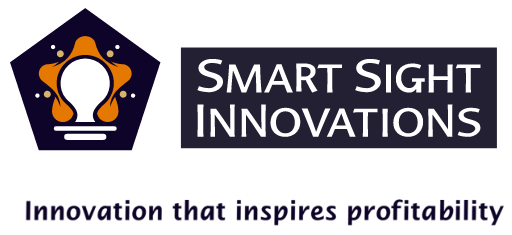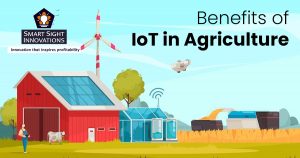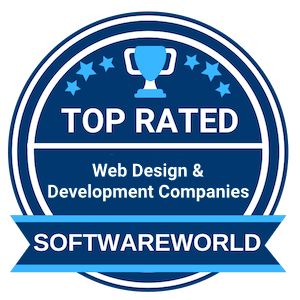
The Internet of Things (IoT) is a symphony of devices collecting and exchanging data to transform our world. But what orchestrates this intricate dance?
This article explores the four foundational systems of IoT technology. We’ll delve into the role of sensors and actuators in capturing and influencing the physical world and explore how data travels seamlessly via communication protocols.
It also looks into the aspects of data storage and management, the brainpower behind extracting valuable insights. By understanding these core systems, you’ll gain a deeper appreciation for IoT systems that seamlessly interconnect your world.
The Four Primary Systems of IoT Technology
One cannot stress how important IoT technology is in today’s environment. It plays a pivotal role in driving innovation and efficiency across various industries. The ongoing evolution of IoT technology promises to bring even more advanced capabilities, making it an integral part of the modern technological landscape.
The IoT is built on four primary systems that work together to create a seamless and efficient network of connected devices. These systems are essential for the functionality and effectiveness of IoT technology. The four primary systems are:
1. Connectivity
There are two main approaches to connecting IoT devices:
-
Wired Connections
While less common due to limitations in mobility, wired connections offer advantages like high bandwidth and low latency, making them ideal for applications requiring real-time data transfer. Examples include Ethernet, and USB.
-
Wireless Communication
Wireless connections offer greater flexibility and are widely used in IoT due to their ease of deployment. However, factors like range, bandwidth, and power consumption need to be considered. Some popular options are Wi-Fi, bluetooth, and cellular networks.
Low-Power Wide-Area Networks (LPWAN) for Long-Range Communication
For applications requiring long-range communication with low power consumption, Low-Power Wide-Area Networks (LPWAN) come into play. These networks prioritize efficient data transfer over high bandwidth, making them suitable for battery-powered devices like sensors in remote areas. Examples include:
-
LoRaWAN
A popular LPWAN protocol offering long-range connectivity for industrial IoT applications.
-
Sigfox
Another LPWAN option with a focus on low power usage and wide area coverage.
Choosing the Right Connectivity Solution for Your IoT Application
The optimal connectivity solution depends on several factors specific to your IoT application. Here are some key considerations:
-
Data Transmission Needs
High bandwidth applications like video streaming require strong Wi-Fi connections, while low-power sensors might be best suited for LPWANs.
-
Deployment Scope
For devices within a limited area, Wi-Fi or Bluetooth might suffice. Widely dispersed devices might necessitate cellular networks or LPWANs.
-
Power Consumption
Battery-powered devices need low-power connections like Bluetooth or LPWANs to maximize battery life.
-
Cost
Consider the costs associated with connectivity hardware, network infrastructure, and subscription fees for cellular networks.
2. Sensors and Data Acquisition
IoT systems collect high-quality, reliable data, forming the foundation for valuable insights and intelligent actions. Sensors come in a vast array of types, each designed to detect and measure specific aspects of the physical world. Some commonly used sensors in IoT applications:
-
Temperature Sensors
Measures the degree of heat in an environment or object. It is used in smart thermostats, HVAC systems, and industrial processes.
-
Humidity Sensors
Detects moisture levels in the air and is commonly used in environmental monitoring, agriculture, and HVAC systems.
-
Motion Sensors
Detects movement within an area and is used in security systems, automated lighting, and smart home devices.
-
Light Sensors
Measures light intensity and is used in smart lighting systems, smartphones, and outdoor lighting controls.
-
Pressure Sensors
Measures the force generated by a fluid or gas. It is used in weather forecasting, industrial automation, and healthcare devices.
-
Proximity Sensors
Detects the presence or absence of an object. They are used in smartphones, automotive systems, and manufacturing.
-
Accelerometers
Measures acceleration forces and is used in wearable devices, smartphones, and vehicle monitoring systems.
-
Gyroscopes
Measures orientation and rotational motion and is commonly used in drones, smartphones, and gaming devices.
-
Gas Sensors
Detects the presence of gasses in the environment. It is used in air quality monitoring, industrial safety, and environmental sensing.
-
Biosensors
Measures biological parameters, such as heart rate and glucose levels and is used in healthcare and wearable devices.
Sensor Integration and Data Collection Strategies
Simply having sensors isn’t enough as they need to be integrated with the overall IoT system for effective data collection. Here’s how it’s achieved:
-
Sensor Nodes
These are miniaturized units that house the sensor itself, along with processing power and communication capabilities. They collect sensor data and often perform initial processing before transmitting it.
-
Gateways
These act as bridges between sensor nodes and the internet. They receive data from multiple sensors, perform additional processing and filtering, and then route the data to the cloud or local servers.
-
Data Collection Strategies
The method of data collection depends on the application and sensor type. Some sensors transmit data continuously (e.g., temperature monitoring), while others might collect data at specific intervals or upon detecting a change (e.g., motion sensor).
Sensor Data Quality and Reliability
The quality and reliability of sensor data are paramount for successful IoT applications. Here are some key considerations:
-
Sensor Calibration
Sensors need regular calibration to ensure accuracy in their measurements.
-
Data Filtering and Cleaning
Sensor data can be noisy or contain errors. Techniques like filtering and cleaning are crucial to ensure data integrity.
-
Fault Tolerance
Sensors can malfunction. Reliability of a system depends on its capacity to identify and manage sensor failures.
3. Data Management and Analytics
The sheer volume and variety of data generated by IoT devices necessitate robust storage and management solutions. Cloud storage platforms have emerged as the preferred choice for several reasons:
-
Scalability
Cloud storage can easily scale up or down to accommodate fluctuating data volumes.
-
Accessibility
Data can be accessed from anywhere with an internet connection, enabling remote monitoring and analysis.
-
Security
To safeguard critical IoT data, cloud providers employ strong security measures.
Data management platforms specifically designed for IoT applications offer additional functionalities:
-
Data ingestion
Efficiently collect and integrate data from diverse sensor types and formats.
-
Data organization and filtering
Structure and categorize data for easier analysis.
-
Real-time data processing
Enable near-instantaneous analysis for applications requiring immediate action.
Data Processing, Analytics, and Visualization Techniques
Once your data is stored and organized, it’s time to unlock its potential. Here are some key techniques used in IoT data analytics:
-
Data Cleaning and Preprocessing
Eliminate errors, inconsistencies, and missing values to ensure data quality.
-
Data Aggregation and Transformation
Combine and summarize data to identify trends and patterns.
-
Machine Learning and AI
Powerful tools for extracting insights, predicting future events, and enabling automated decision-making based on the data.
When displaying complicated data in an intelligible fashion, data visualization is essential. Techniques like dashboards, charts, and graphs help users quickly grasp trends, identify anomalies, and make informed decisions.
Deriving Insights and Actions from IoT Data
The ultimate goal of data management and analytics is to transform raw data into actionable insights. Here’s how it’s achieved:
-
Identifying patterns and trends
Analyze data over time to uncover patterns and relationships that might not be readily apparent.
-
Predictive maintenance
Anticipate equipment failures by analyzing sensor data and historical trends, allowing for proactive maintenance.
-
Process optimization
Analyze data to identify inefficiencies and bottlenecks in processes, enabling data-driven optimization.
-
Customer behavior analysis
Gain insights into customer behavior by analyzing data from connected devices, leading to improved product development and targeted marketing strategies.
4. User Interfaces (UI) and Applications (apps)
The UI and apps are the bridge between the complex world of IoT devices and human users. They provide a way to visualize the data collected by sensors, control connected devices, and interact with the IoT system in a meaningful way. There are two main categories of user interfaces in IoT systems:
a. Device-Level UIs
These interfaces are typically found on the physical devices themselves and are often limited due to size and processing power constraints. Examples include:
- LED lights on thermostats or routers that indicate status.
- Small screens on wearables that display basic data like heart rate or step count.
b. App-based UIs
These interfaces are accessed through smartphones, tablets, or computers and offer a more comprehensive user experience. They can provide features like:
- Dashboards to visualize sensor data in real-time or over time.
- Controls to adjust settings and manage connected devices remotely.
- Configuration options to personalize the user experience.
- Analytics and reporting tools to gain insights from the collected data.
Any IoT system’s usability and acceptance are greatly influenced by its user interface design. Here are some key considerations for effective IoT UI design:
-
Simplicity and Clarity
Even non-technical users should be able to easily navigate and understand the user interface.
-
Data Visualization
Use clear and concise visuals like charts, graphs, and icons to represent complex data.
-
Responsiveness
The user interface should adjust to various screen sizes and devices with ease.
-
Security
Ensure the UI has secure login procedures and data encryption to protect user privacy.
IoT applications are software programs designed to interact with and manage IoT devices and systems. These apps can be categorized into two main types:
a. Consumer-facing Apps
These apps are designed for everyday users to control their smart homes, wearables, or other connected devices. Examples include:
- Smart home apps to control thermostats, lights, and appliances.
- Fitness tracker apps to monitor activity levels and health data.
- Wearable companion apps to provide additional features and data visualization.
b. Enterprise-level Apps
These apps are used by businesses to manage industrial IoT systems, track assets, and optimize operations. Examples include:
-
Predictive maintenance apps
Analyzing sensor data can help in predicting equipment failures and schedule maintenance proactively.
-
Supply chain management apps
Track the location and status of goods in real-time for improved logistics and inventory management .
-
Facility management apps
Monitor and control building systems like lighting, HVAC, and security for increased efficiency and energy savings.
The development of IoT applications requires expertise in various areas, including:
- Linking the app to the data streams coming from different gadgets and sensors.
- Creating clear and informative dashboards and reports.
- Ensuring secure communication between the app, devices, and the cloud.
- Creating an intuitive and user-friendly experience.
By carefully considering these factors, developers can create powerful IoT applications that unlock the full potential of connected devices and transform the way we live, work, and interact with the world around us.
Security and Privacy
Security and privacy are crucial components of IoT technology, making them the fifth primary system in addition to the above four. The interconnected nature of IoT systems introduces unique security and privacy challenges. Due to factors like weak passwords, unpatched software, and limited processing power, IoT devices are attractive targets for cyberattacks. Here are some common security threats:
-
Hacking
Malicious actors can exploit vulnerabilities in devices or networks to gain unauthorized access, potentially disrupting operations, stealing data, or launching attacks on other systems.
-
Data Breaches
Sensitive data collected by IoT devices, such as personal information, home security footage, or industrial process data, can be intercepted or stolen in a data breach, leading to privacy violations and financial losses.
-
Botnet Attacks
Large networks of compromised IoT devices can be used to launch Distributed Denial-of-Service (DDoS) attacks, overwhelming servers and disrupting critical services.
Denial-of-Service (DoS) Attacks: Attackers can target individual devices or entire networks, rendering them unavailable to legitimate users.
These threats can have severe consequences, highlighting the importance of robust security measures in any IoT deployment.
Secure Authentication and Authorization Protocols
The first line of defense in securing your IoT system lies in implementing strong authentication and authorization protocols. Here’s what they do:
-
Authentication
Guarantees that the network and data are only accessible to authorized users and devices. Common methods include passwords, multi-factor authentication (MFA), and digital certificates.
-
Authorization
Determines what level of access authenticated devices and users have. This makes sure that certain actions within the system can only be carried out by authorized parties. Choosing appropriate authentication and authorization protocols based on the sensitivity of the data and the capabilities of your devices is crucial.
Building a Robust Security Architecture for IoT
Creating a layered security approach is vital to protecting your IoT system. Here are some key elements:
-
Secure Device Design
Prioritize devices with built-in security features, secure boot processes, and the ability to receive regular software updates to patch vulnerabilities.
-
Network Segmentation
IoT devices should be isolated from vital business networks to reduce the possible impact of a breach.
-
Data Encryption
Encrypt data at rest and in transit to render it unreadable even if intercepted by attackers.
-
Vulnerability Management
Regularly scan devices and networks for vulnerabilities and promptly install security patches to address them.
-
Incident Response Plan
Create a strategy for locating, containing, and addressing security events.
By implementing these security measures, you can significantly reduce the risk of attacks and protect your valuable data and devices within your IoT ecosystem.
How do IoT Systems Actually Work?
IoT systems work through a seamless collaboration between physical devices, communication networks, and data management platforms. Imagine an IoT system for a smart home. Sensors in your thermostat monitor temperature. This data travels over your WiFi network to the cloud. There, it’s processed and displayed on your phone app.
You can see the current temperature and adjust it remotely if needed. Additionally, the system might analyze historical data and learn your preferences, automatically adjusting the temperature for optimal comfort and energy savings.
Overall, IoT systems are a powerful combination of hardware, software, and connectivity that bridge the gap between the physical and digital worlds, allowing us to collect data, gain insights, and ultimately make smarter decisions and take automated actions in various aspects of our lives.











